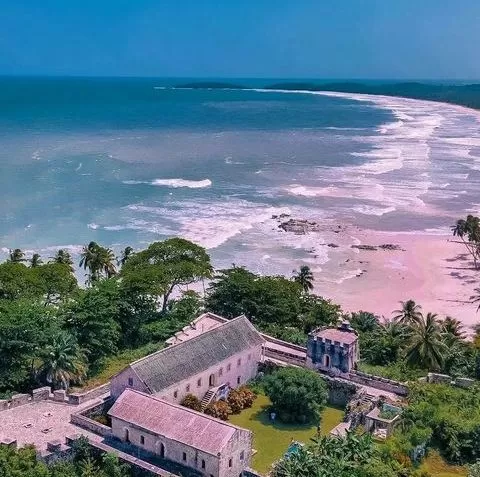Fort Gross Federickburg, situated in the Western Region of Ghana, is a significant historical landmark that has stood the test of time. The Dutch founded this trading post in 1683, and it eventually became a significant hub for the transatlantic slave trade. Currently, it serves as a reminder of Ghana’s rich cultural heritage and remains a popular tourist destination.
History Fort Gross Federickburg
Fort Gross Federickburg was established in 1683 by the Dutch West India Company as a trading post primarily for gold and slaves. The fort was named in honor of Frederick V, Elector Palatine of the Rhine, who provided the funding for its construction. Over time, the fort changed hands several times, with the Swedish and Danish occupying it before it was ultimately sold to the British in 1850.
During the transatlantic slave trade, Fort Gross Federickburg played a significant role as a major center for the slave trade. Thousands of enslaved Africans were held in brutal conditions within the fort before being transported across the Atlantic to the Americas.
Despite the disturbing history associated with the fort, it remains an essential site for understanding Ghana’s cultural and historical heritage.
The fort was built with a combination of European and African architectural styles. The exterior walls of the fort were constructed using local stone and brick, while the interior was made of wood and mud.
The fort had two floors, with the ground floor serving as a storage area for goods and slaves, while the upper floor was used for administrative purposes. The fort also had a small chapel where the enslaved Africans were forced to attend Christian services.
Significance of Fort Gross Federickburg
Fort Gross Federickburg holds immense historical significance, acting as a palpable representation of Ghana’s multifaceted and rich history. It stands as a testament to the heinous crimes perpetrated during the transatlantic slave trade and the consequential impact it had on the African continent.
Alongside its historical importance, the fort has also become a coveted tourist destination, attracting visitors from all corners of the globe who seek to educate themselves on Ghana’s cultural heritage and past.
Thank you for reading this article.
Related articles
Fort Apollonia: A Historic Landmark In Ghana In Ghana
Fort St. Anthony: A Historical Landmark In Axim
Fort Metal Cross: Exploring The History And Significance
Discovering The Rich History Of Fort San Sebastian
Fort Prinzenstein: A Dark Chapter In Ghana’s History
Fort St. Jago (Elmina): All You Need To Know Before Visiting

